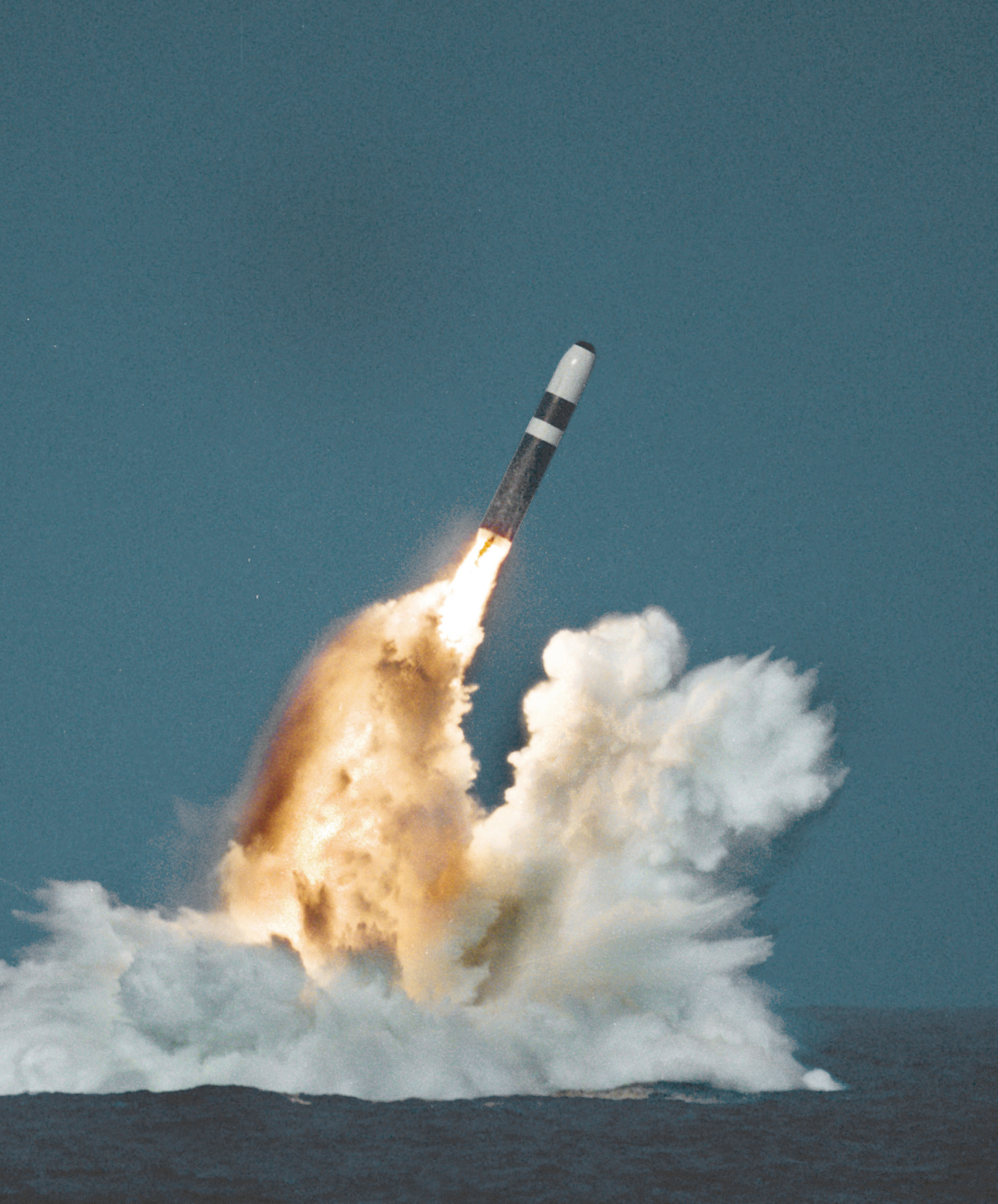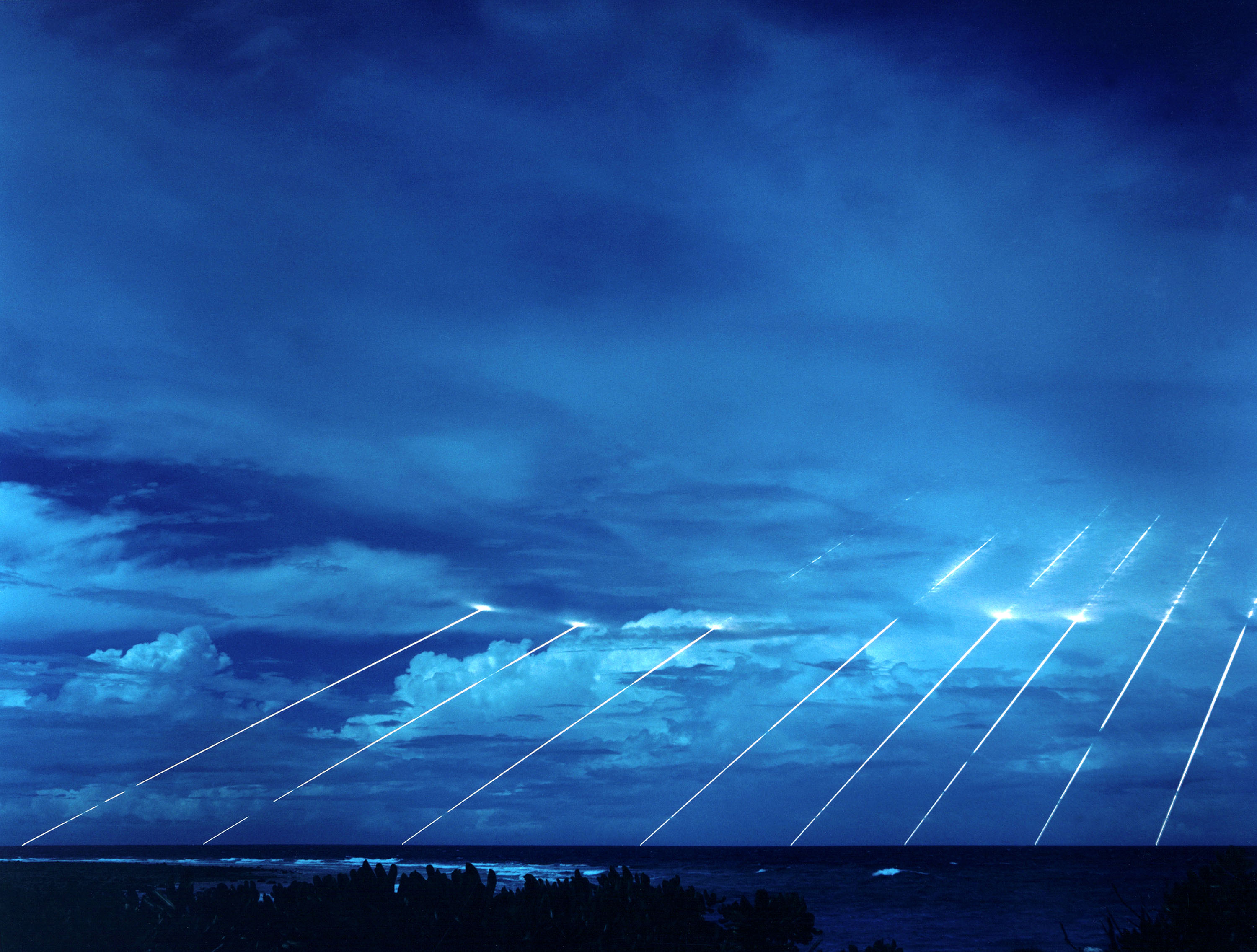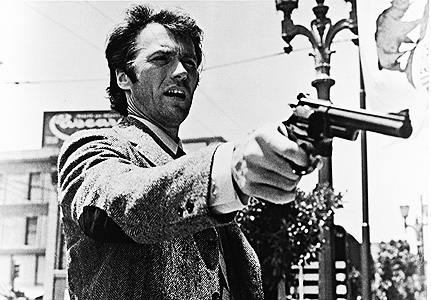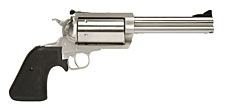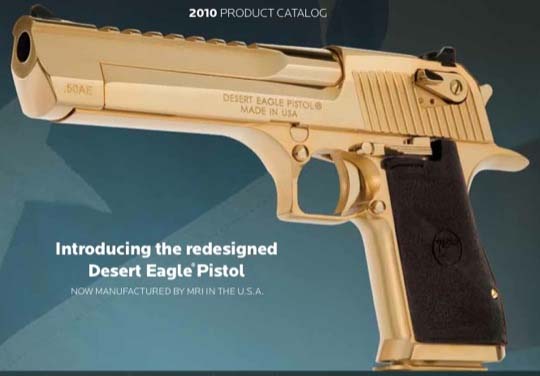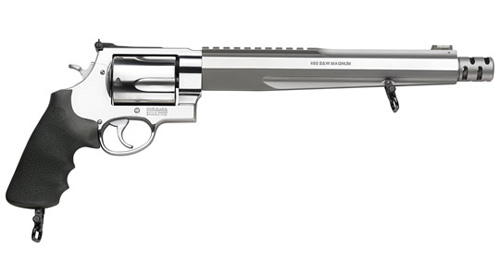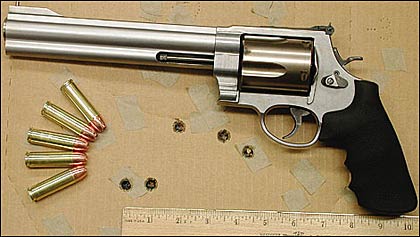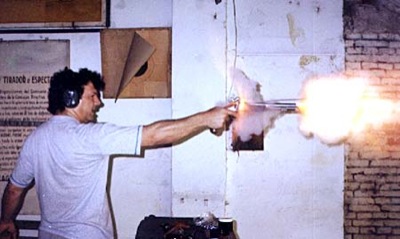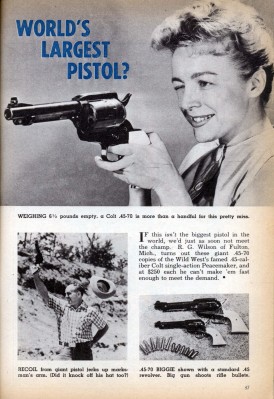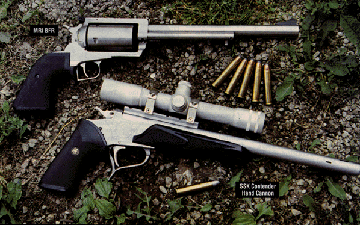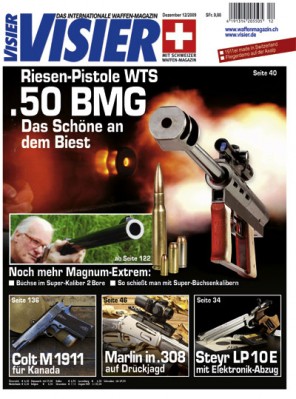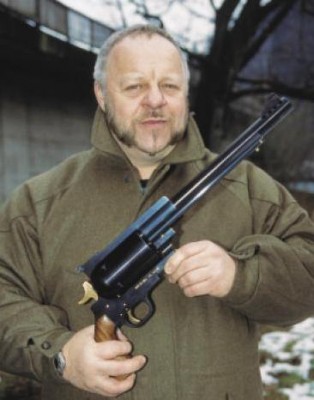#5: Mossberg 500/590 Bullpup
The
Mossberg 500/590 bullpup edition will start the countdown at #5. These
Mossbergs are 80’s movie stars, starring in Predator 2, the Running Man,
and Robocop probably due to their futuristic appeal. Collectors should
be on alert: their value is set to only rise, because there isn’t
anything like them currently being manufactured by Mossberg. (Update:
I’ve been told there are bullpup kits out there for newer Mossbergs,
and there’s a chance Mossberg will convert an existing shotgun to a
bullpup for you.) And, being a Mossberg, they carry a certain degree of intrinsic reliability.

Like
reliability, there are more pros that aren’t just superficial…the
Mossberg 500/590 bullpups are good shotguns, too. Even though the stock
has a lot of gadgetry in it (as with most bullpups), it does really well
to mitigate recoil. This attribute is in part due to being heavy, which
could be seen as a con. They still boast an 18.5” or 20”
tactical-length barrel. They are easy to clean and break down for
whatever purpose. The pump action is smooth and makes a great
intimidating (for some too loud) sound, and it comes with a nice grip.

Modified Mossberg 500 bullpup
There
are, of course, some nitpicky cons that prevent it from being higher on
the list. The sight is disappointing to me. Admittedly, you won’t need a
good sight if the target is close enough. Admittedly, you can change
the sight to any one that you wish if you know your way around a gun.
However, I don’t think I’m crazy when I think that a sight doesn’t need
to double as a carrying handle. Personally, I don’t value a carrying
handle enough to start sacrificing optics. There have been vast
improvements in optics since the gun came out in the 80's, so my
critique might be a little unfair. Anyway, moving on, here is a list of
other cons:
- Annoying and unnecessary grip safety (there’s another safety on the trigger)
- Heavy by any standard
- Long/heavy trigger pull, although not unreasonable
- The Mossberg 500 has a low capacity relative to others on this list (5+1), although the Mossberg 590 has a better capacity (8+1).
- High cost because they’re pretty hard to find
- Ejection port is going to be on the right side next to your face (and literally in your face as a lefty, so lefties can’t use it).

#4: Remington 870 Bullpup Conversion
Coming
in at number four in the countdown is the Remington 870 bullpup
conversion. This is a great build, only takes about an hour to convert
for the mechanically challenged, and although it’s virtually all
plastic, it carries with it the Remington reliability. It's impressively
almost 10 inches shorter than a traditional 870.
I haven’t carried out 10,000 round tests on these shotguns myself, but my top bet judging from a random sample of internet comments and intuition is that the Remington bullpup would perform the best on this list. Obviously I’d love to gather data to confirm that, but that’s just not practical to do for me at the moment. Sometimes reliability alone is the most important quality in a home defense shotgun. If you don’t feel comfortable buying a lesser known brand, the 870 bullpup will get the job done. Also, a Remington 870 + the conversion kit + accessories are going to be very reasonably priced at about $750.
I haven’t carried out 10,000 round tests on these shotguns myself, but my top bet judging from a random sample of internet comments and intuition is that the Remington bullpup would perform the best on this list. Obviously I’d love to gather data to confirm that, but that’s just not practical to do for me at the moment. Sometimes reliability alone is the most important quality in a home defense shotgun. If you don’t feel comfortable buying a lesser known brand, the 870 bullpup will get the job done. Also, a Remington 870 + the conversion kit + accessories are going to be very reasonably priced at about $750.

This is from a Youtube video made by Buds Gun Shop, but I'm almost sure I can't provide a link due to terms and conditions.
Other
than a small edge in both reliability and price, the Remington doesn’t
really separate itself from the pack much. There were three other small
things I liked about it that I’ll mention quickly. First, it has a pump
grip guard that prevents your hand from accidently sliding in front of
the barrel (which is a potential issue with other shotguns on this
list). Second, it has rails on the top, side, and bottom for a sight,
grip, laser, flashlight, and so on. While rails are an upgrade over the
Mossberg, it’s something that I almost come to expect these days.
Finally, it’s not super fast to reload, but it is faster than others on
this list.
There are a few cons, none of which are deal breakers. The most significant of these in my home defense metric is the pump. The pump action is noticeably unsmooth, and this could be an issue with a gun that is already prone to short shucking (which is a tendency with all pump shotgun bullpups). The second biggest issue is that it “only” holds 6+1, which is satisfactory, but like the Mossberg, isn’t exceptional. Third, like the Mossberg, its ejector port is on the right side next to your ear no matter what. This is obviously especially frustrating for lefties, but also frustrating for right-handers because of the smoke, noise, and heat that are right next to your face. This might seem inevitable for a bullpup, but we’ll look at a gun later that has a fix for this.
I’ll list the rest of my grievances:
There are a few cons, none of which are deal breakers. The most significant of these in my home defense metric is the pump. The pump action is noticeably unsmooth, and this could be an issue with a gun that is already prone to short shucking (which is a tendency with all pump shotgun bullpups). The second biggest issue is that it “only” holds 6+1, which is satisfactory, but like the Mossberg, isn’t exceptional. Third, like the Mossberg, its ejector port is on the right side next to your ear no matter what. This is obviously especially frustrating for lefties, but also frustrating for right-handers because of the smoke, noise, and heat that are right next to your face. This might seem inevitable for a bullpup, but we’ll look at a gun later that has a fix for this.
I’ll list the rest of my grievances:
- Takes a long time to clean…requires complete disassembly
- Only one color
- No place for a side saddle
#3: UTS-15
Number three on the countdown is the Turkish UTAS UTS-15. I’m not sure why they didn’t go ahead and just call it the UTAS-15,
they were only one letter short. Anyway, it’s a gun that immediately
catches the eye (perhaps the word ugly comes to mind, but I prefer the
term eye-catching). The UTS-15 has a lot of cool features that makes it
and immediate competitor in the bullpup shotgun market. If you haven’t
heard of its maker UTAS, you probably aren’t Turkish. I hear UTAS is
kind of a big deal over there.

With
that being said, it’s not a brand that I would immediately trust simply
out of lack of familiarity. As expected, most of the negative comments
that I’ve seen have been about reliability. The sources that I trust
more seem to agree that it is in fact reliable. Nevertheless, I would
recommend trying the gun out as much as possible before buying.
Reliability is why I’m timid to rank this gun higher. Well, reliability
and these small cons:
- Loud when moving
- No choice of pump grip. The grip it comes with is frighteningly slippery, especially (potentially) when wet.
- Speaking of that, in my opinion, there isn't enough guard to prevent a hand from slipping in front of the muzzle.
- Like the Mossberg and Remington it only ejects to the right side, next to your face
- Expensive in that most go for over $1300, and you’re going to need to add a sight
- Relatively bulky
With
all of those cons, does it really deserve a high place on this list? I
believe so, for two main reasons. For one, it holds 12+1 low brass 12
gauge ammo and 14+1 high brass ammo. That’s a ton. There aren’t a lot of
situations where that isn’t enough to get the job done. The second
reason compliments the first. The UTS-15 feeds from two different
barrels, and UTAS designed a selector switch that allows you to choose
which barrel to feed from. Not only is it nice to be able to choose what
type of ammo you want, but also you’re given the choice to alternate
between the barrels. Also, one feeding barrel is selected and then
emptied, the UTS-15 automatically switches to the other barrel. The
selector feature is unique and offers quite a bit of versatility in a
small package allowing you to potentially choose between two different
types of ammunition on the fly.
There are a few smaller pluses as well. The UTS-15 is incredibly light and durable because it is manufactured with state-of-the-art materials. It can optionally come with a built-in flashlight, laser, or an attachable extended barrel. The extended barrel could be handy if you wish to shoot skeet. It wouldn’t be anyone’s first choice for a clay gun, but it might be kind of a fun one to take to the range. It has rails to attach a sight, and like I said before you'll probably need to do that. Lastly, it's easier to reload than the other pump shotguns.
Just as a note...If I hear more sentiment that this is an unreliable gun, it will probably drop to #5 on the countdown.
There are a few smaller pluses as well. The UTS-15 is incredibly light and durable because it is manufactured with state-of-the-art materials. It can optionally come with a built-in flashlight, laser, or an attachable extended barrel. The extended barrel could be handy if you wish to shoot skeet. It wouldn’t be anyone’s first choice for a clay gun, but it might be kind of a fun one to take to the range. It has rails to attach a sight, and like I said before you'll probably need to do that. Lastly, it's easier to reload than the other pump shotguns.
Just as a note...If I hear more sentiment that this is an unreliable gun, it will probably drop to #5 on the countdown.

As
a side-note, whereas normally with semi-autos you have to worry about
occasional faulty cycling (and no exception with this gun), I’ve seen
pump bullpup shotguns short shucked a lot too. I’d assume the Saiga-12
will reliably cycle with the right choice of ammo. I’d also assume the
bullpups wouldn’t be prone to short shucking once the shooter is
familiar with the gun, and so I didn’t really let those things factor
into my list.
#2: Saiga 12 Kushnapup conversion
Coming
in as the first loser is the Saiga-12 Kushnapup. I’ll admit I was a bit
biased against this gun at first. The finicky plastic look made me
think the semi-auto Kushnapup would fall apart or have too much recoil.
My skeptical predisposition was soon lost after witnessing the firepower of this gun. Semi-auto of course is potentially lifesaving fractions of a second faster than pump shotguns. With that being said, I think even professionals are more likely to go through ammo faster with the semi-auto shotgun. This could lead to emptying a clip without adequate and thoughtful target selection. Pump versus semi-auto is a matter of personal preference, and that is probably what determines this shotgun’s place on a top-5 list for a reader.
My skeptical predisposition was soon lost after witnessing the firepower of this gun. Semi-auto of course is potentially lifesaving fractions of a second faster than pump shotguns. With that being said, I think even professionals are more likely to go through ammo faster with the semi-auto shotgun. This could lead to emptying a clip without adequate and thoughtful target selection. Pump versus semi-auto is a matter of personal preference, and that is probably what determines this shotgun’s place on a top-5 list for a reader.
The
Kushnapup is undoubtedly a fun gun. There's not a whole lot of kick,
and you can fire it one handed. Rich mavericks (or pretenders) might
potentially try to dual wield two of these babies, but again, the
ejector port is on the right side, which is troublesome. The one handed
thing has been known to come in handy in a firefight because hands are
sometimes at a premium. If one arm is shot, if you have to open a door,
etc. it will come in handy (don't think that I've been in that sort of
situation, but it makes sense).
There are a couple of more notes that I'd like to share with you. The capacity of the gun is low, but can be improved by buying an extended clip. Drum magazines don't work particularly well because with the bullpup configuration the feed is farther back; hence the drum magazine is gaudily sitting on your chest.
There are sight rails, and you'll need a sight if you're accustomed to shooting traditional builds. Also, there isn't an easy, straightforward way to add a flashlight and a laser. The grip isn't optional but the one it comes with is satisfactory and ergonomical. Lastly, the Kushnapup conversion at times can be hard to find and acquire.
And with that, we move to #1...
There are a couple of more notes that I'd like to share with you. The capacity of the gun is low, but can be improved by buying an extended clip. Drum magazines don't work particularly well because with the bullpup configuration the feed is farther back; hence the drum magazine is gaudily sitting on your chest.
There are sight rails, and you'll need a sight if you're accustomed to shooting traditional builds. Also, there isn't an easy, straightforward way to add a flashlight and a laser. The grip isn't optional but the one it comes with is satisfactory and ergonomical. Lastly, the Kushnapup conversion at times can be hard to find and acquire.
And with that, we move to #1...

Numero uno: The Kel-Tech KSG shotgun
The
KSG is Kel-Tech's first shotgun, and it set the a good standard for
bullpups. I must admit I get a little swoony over it, so I must ask that
you bear with me. The KSG started as a curiosity for most gun owners
but it has earned some enthusiasts since it came out in 2011.
Unfortunately, demand is high and they have gotten very pricey. One
might have to be patient for the prices to come back down. Here is my
take:
Finally, we come to a bullpup that ejects downward, making it 100% ambidextrous. This wouldn't be such a big deal if the conversion kits and UTAS were more accepting of lefties, but when comparing it to other guns on the list downward ejection seems like a luxury. Also, at the range the KSG is more pleasant simply because there is less heat and smoke in your face.
Finally, we come to a bullpup that ejects downward, making it 100% ambidextrous. This wouldn't be such a big deal if the conversion kits and UTAS were more accepting of lefties, but when comparing it to other guns on the list downward ejection seems like a luxury. Also, at the range the KSG is more pleasant simply because there is less heat and smoke in your face.

I promise they aren't paying me.
You
want capacity? You have capacity. The KSG can hold 7+7+1 rounds,
meaning it has two feeding tubes that hold seven rounds each and of
course you can chamber a round. Like the UTS-15, this means that you can
have 7+1 rounds of one type of ammo and 7 rounds of another, and
quickly choose between each whenever you desire. Also, there's a handy
slide release on the trigger.
What really sets the KSG apart for me however is its lightness and compactness. There isn't a shotgun off the top of my head that I would rather have in tight corners or spaces. It doesn't look or feel like it should have 14 round capacity or an 18.5" barrel. Thus it is a true representation of what a bullpup shotgun should be. Plus, it looks pretty sexy. The most similar gun, the UTS-15, is bigger than the KSG but I don't like the feel as much, and you don't get anything (except for a selector switch mode) that the KSG doesn't offer. There are pictures of the KSG everywhere for good reason.
It's also pleasant to have rails. Like any of these bullpup guns, if you're used to shooting traditional shotguns you'll probably have trouble at first. The KSG can be fitted with any optics you desire to fix this problem, and you can add things like a grip guard and other accessories to the bottom.
If I had to complain I would complain that it's awkward to reload because the feed is so far back on the stock. However, I haven't seen a bullpup that really solved this problem except for the Saiga with a magazine feed. I would also complain that once a feeding tube is empty you have to find the selector switch and switch to the other tube or reload. This could be costly in the heat of action, although 7+1 is pretty good if you just count one barrel. Lastly, the MSRP is pretty cheap in the $800-900 range, but they're hard to find so they will probably go for much more than that ($1500 plus or minus $500).
The overall package is just a fun and reliable shotgun. When the KSG is laid out on a table next to other guns, it's hard not to pick it up first. Hopefully Kel-tech will come out with another model and/or there will be more shotguns like it in the future. For a first gen model, they knocked it out of the park.
What really sets the KSG apart for me however is its lightness and compactness. There isn't a shotgun off the top of my head that I would rather have in tight corners or spaces. It doesn't look or feel like it should have 14 round capacity or an 18.5" barrel. Thus it is a true representation of what a bullpup shotgun should be. Plus, it looks pretty sexy. The most similar gun, the UTS-15, is bigger than the KSG but I don't like the feel as much, and you don't get anything (except for a selector switch mode) that the KSG doesn't offer. There are pictures of the KSG everywhere for good reason.
It's also pleasant to have rails. Like any of these bullpup guns, if you're used to shooting traditional shotguns you'll probably have trouble at first. The KSG can be fitted with any optics you desire to fix this problem, and you can add things like a grip guard and other accessories to the bottom.
If I had to complain I would complain that it's awkward to reload because the feed is so far back on the stock. However, I haven't seen a bullpup that really solved this problem except for the Saiga with a magazine feed. I would also complain that once a feeding tube is empty you have to find the selector switch and switch to the other tube or reload. This could be costly in the heat of action, although 7+1 is pretty good if you just count one barrel. Lastly, the MSRP is pretty cheap in the $800-900 range, but they're hard to find so they will probably go for much more than that ($1500 plus or minus $500).
The overall package is just a fun and reliable shotgun. When the KSG is laid out on a table next to other guns, it's hard not to pick it up first. Hopefully Kel-tech will come out with another model and/or there will be more shotguns like it in the future. For a first gen model, they knocked it out of the park.
Thanks for reading, be safe, and I hope to come out with some more weapons hubs in the near future. Suggestions welcome!
Interstate Arms Black GA Defender

Interstate Arms has been offering high-quality home defense and police weapons for 37 years. They have a strong track record of offering great weapons at reasonable prices. Interstate Arms Black GA Defender is a 12 gauge black matte finish shotgun with an 18.5 inch barrel. It comes with Ghost Ring sights, a 5+1 shell chamber, and weighs 7 pounds.
Suggested Retail Price: $209.00
Mossberg 500 Special Purpose Series

The Mossberg 500® & 590® Special Purpose Series features 12 gauge 18.5 to 20 Inch barrels. These come with available pistol grip options and thumb operated safety. These pump action shotguns include anti-jam elevators, and shell extraction for easy feeding. They have the ability to hold 6-8-9 shell casings of 2 3/4 inches, and include the proven Mossberg adjustable Ghost Ring Sights.
Price Range: $350.00 - $820.00
Remington MODEL 870 EXPRESS TACTICAL WITH BLACKHAWK! SPEC OPS II

The Remington Model 870™ Express® Tactical with BLACKHAWK! Spec Ops II is a seven-pound pump action 12 gauge shotgun that employs an 18-inch barrel. It has a 7 point length of position stock, cross bolt safety behind the trigger, and enhanced pistol grip. It comes with an adjustable sling-mount and recoil reduction system.
Suggested Retail Price: $638.00
Saiga 12 Auto Shotgun

For those who desire to break away from traditional pump and auto-loaders; the Saiga 12 is a 41-inch (19" Barrel) AK-47 model that has been adapted to act as a rifle to shotgun hybrid by Russian arms maker IZHMASH. The semi-automatic Saiga comes with a 5 round magazine that can hold 2 1/4" along with 3" shells and be upgraded to 8-10-12 round magazines. Originally designed for predator hunting, this model has the ability to serve as a home defense shotgun due to its gas operated system that reduces the risk of jams while providing magazines with fast reload time.
Suggested Retail Price: $580.00
Weatherby PA-459™ TR (Threat Response)

The Weatherby PA-459™ TR is an easy to operate home defense shotgun at a reasonable price to match. It comes with an 18.5 inch barrel, pistol grip butt stock, and adjustable ghost ring sight. It has an extended enlarged slide release located in front of the trigger guard and a 13.5 shoulder length of pull for a swift sight acquisition on targets.
Suggested Retail Price: $499.00 - See more at: http://gundata.org/blog/post/best-home-defense-shotgun/#sthash.hqm0Ke4d.dpuf
Interstate Arms Black GA Defender

Interstate Arms has been offering high-quality home defense and police weapons for 37 years. They have a strong track record of offering great weapons at reasonable prices. Interstate Arms Black GA Defender is a 12 gauge black matte finish shotgun with an 18.5 inch barrel. It comes with Ghost Ring sights, a 5+1 shell chamber, and weighs 7 pounds.
Suggested Retail Price: $209.00
Mossberg 500 Special Purpose Series

The Mossberg 500® & 590® Special Purpose Series features 12 gauge 18.5 to 20 Inch barrels. These come with available pistol grip options and thumb operated safety. These pump action shotguns include anti-jam elevators, and shell extraction for easy feeding. They have the ability to hold 6-8-9 shell casings of 2 3/4 inches, and include the proven Mossberg adjustable Ghost Ring Sights.
Price Range: $350.00 - $820.00
Remington MODEL 870 EXPRESS TACTICAL WITH BLACKHAWK! SPEC OPS II

The Remington Model 870™ Express® Tactical with BLACKHAWK! Spec Ops II is a seven-pound pump action 12 gauge shotgun that employs an 18-inch barrel. It has a 7 point length of position stock, cross bolt safety behind the trigger, and enhanced pistol grip. It comes with an adjustable sling-mount and recoil reduction system.
Suggested Retail Price: $638.00
Saiga 12 Auto Shotgun

For those who desire to break away from traditional pump and auto-loaders; the Saiga 12 is a 41-inch (19" Barrel) AK-47 model that has been adapted to act as a rifle to shotgun hybrid by Russian arms maker IZHMASH. The semi-automatic Saiga comes with a 5 round magazine that can hold 2 1/4" along with 3" shells and be upgraded to 8-10-12 round magazines. Originally designed for predator hunting, this model has the ability to serve as a home defense shotgun due to its gas operated system that reduces the risk of jams while providing magazines with fast reload time.
Suggested Retail Price: $580.00
Weatherby PA-459™ TR (Threat Response)

The Weatherby PA-459™ TR is an easy to operate home defense shotgun at a reasonable price to match. It comes with an 18.5 inch barrel, pistol grip butt stock, and adjustable ghost ring sight. It has an extended enlarged slide release located in front of the trigger guard and a 13.5 shoulder length of pull for a swift sight acquisition on targets.
Suggested Retail Price: $499.00 - See more at: http://gundata.org/blog/post/best-home-defense-shotgun/#sthash.hqm0Ke4d.dpuf
Interstate Arms Black GA Defender

Interstate Arms has been offering high-quality home defense and police weapons for 37 years. They have a strong track record of offering great weapons at reasonable prices. Interstate Arms Black GA Defender is a 12 gauge black matte finish shotgun with an 18.5 inch barrel. It comes with Ghost Ring sights, a 5+1 shell chamber, and weighs 7 pounds.
Suggested Retail Price: $209.00
Mossberg 500 Special Purpose Series

The Mossberg 500® & 590® Special Purpose Series features 12 gauge 18.5 to 20 Inch barrels. These come with available pistol grip options and thumb operated safety. These pump action shotguns include anti-jam elevators, and shell extraction for easy feeding. They have the ability to hold 6-8-9 shell casings of 2 3/4 inches, and include the proven Mossberg adjustable Ghost Ring Sights.
Price Range: $350.00 - $820.00
Remington MODEL 870 EXPRESS TACTICAL WITH BLACKHAWK! SPEC OPS II

The Remington Model 870™ Express® Tactical with BLACKHAWK! Spec Ops II is a seven-pound pump action 12 gauge shotgun that employs an 18-inch barrel. It has a 7 point length of position stock, cross bolt safety behind the trigger, and enhanced pistol grip. It comes with an adjustable sling-mount and recoil reduction system.
Suggested Retail Price: $638.00
Saiga 12 Auto Shotgun

For those who desire to break away from traditional pump and auto-loaders; the Saiga 12 is a 41-inch (19" Barrel) AK-47 model that has been adapted to act as a rifle to shotgun hybrid by Russian arms maker IZHMASH. The semi-automatic Saiga comes with a 5 round magazine that can hold 2 1/4" along with 3" shells and be upgraded to 8-10-12 round magazines. Originally designed for predator hunting, this model has the ability to serve as a home defense shotgun due to its gas operated system that reduces the risk of jams while providing magazines with fast reload time.
Suggested Retail Price: $580.00
Weatherby PA-459™ TR (Threat Response)

The Weatherby PA-459™ TR is an easy to operate home defense shotgun at a reasonable price to match. It comes with an 18.5 inch barrel, pistol grip butt stock, and adjustable ghost ring sight. It has an extended enlarged slide release located in front of the trigger guard and a 13.5 shoulder length of pull for a swift sight acquisition on targets.
Suggested Retail Price: $499.00 - See more at: http://gundata.org/blog/post/best-home-defense-shotgun/#sthash.hqm0Ke4d.dpuf




